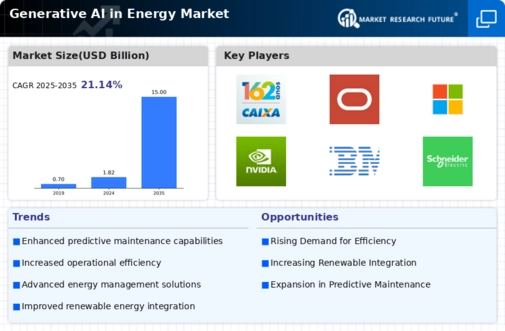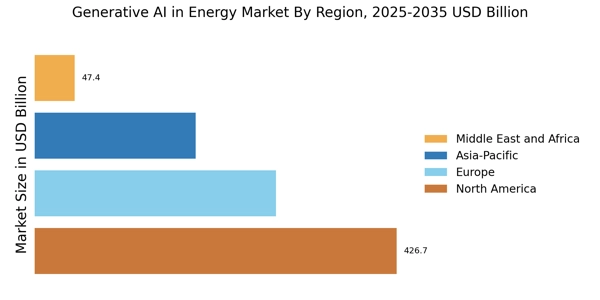Enhanced Operational Efficiency
The integration of Generative AI in Energy Market appears to enhance operational efficiency across various sectors. By leveraging advanced algorithms, energy companies can optimize their supply chains, reduce waste, and improve resource allocation. For instance, predictive analytics powered by Generative AI can forecast energy demand with remarkable accuracy, potentially leading to a 20% reduction in operational costs. This efficiency not only benefits the companies but also contributes to a more sustainable energy ecosystem. As energy consumption patterns evolve, the ability to adapt and respond swiftly becomes crucial. Therefore, the adoption of Generative AI technologies is likely to be a driving force in achieving operational excellence in the energy sector.
Improved Decision-Making Processes
Generative AI in Energy Market is poised to revolutionize decision-making processes by providing data-driven insights. The ability to analyze vast datasets in real-time allows energy companies to make informed decisions regarding resource management and investment strategies. For example, a recent study indicates that organizations utilizing AI-driven analytics have experienced a 15% increase in decision-making speed. This acceleration is critical in a rapidly changing energy landscape, where timely decisions can lead to competitive advantages. Furthermore, the insights generated by AI can help identify emerging trends and potential risks, enabling companies to navigate uncertainties more effectively. Thus, the role of Generative AI in enhancing decision-making capabilities cannot be overstated.
Cost Reduction in Energy Production
Generative AI in Energy Market is associated with substantial cost reductions in energy production. By automating various processes and optimizing resource allocation, companies can significantly lower their operational expenses. For example, AI-driven predictive maintenance can reduce equipment downtime by up to 25%, leading to lower maintenance costs and increased productivity. Additionally, the ability to analyze market trends and consumer behavior allows companies to adjust their production strategies accordingly, further enhancing profitability. As energy prices fluctuate, the need for cost-effective production methods becomes increasingly pressing. Therefore, the adoption of Generative AI technologies is likely to be a key factor in driving down costs in the energy sector.
Enhanced Customer Engagement and Experience
The implementation of Generative AI in Energy Market is transforming customer engagement and experience. By utilizing AI-driven chatbots and personalized communication strategies, energy companies can provide tailored services to their customers. This approach not only improves customer satisfaction but also fosters loyalty. Data indicates that companies employing AI for customer interactions have seen a 20% increase in customer retention rates. Furthermore, AI can analyze customer usage patterns, enabling companies to offer customized energy solutions that meet individual needs. As the energy market becomes more competitive, enhancing customer experience through Generative AI will likely be a crucial differentiator for companies aiming to thrive in this evolving landscape.
Facilitation of Renewable Energy Integration
The role of Generative AI in Energy Market is increasingly vital in facilitating the integration of renewable energy sources. As the demand for clean energy rises, AI technologies can optimize the management of diverse energy inputs, such as solar and wind. For instance, AI algorithms can predict energy generation from renewable sources, allowing for better grid management and reducing reliance on fossil fuels. Reports suggest that the implementation of AI in energy systems could lead to a 30% increase in the efficiency of renewable energy utilization. This integration not only supports sustainability goals but also enhances energy security by diversifying energy sources. Consequently, Generative AI is likely to play a pivotal role in shaping the future of energy production.


















Leave a Comment